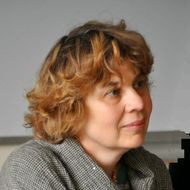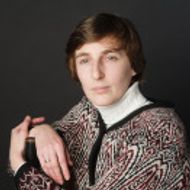- A
- A
- A
- ABC
- ABC
- ABC
- А
- А
- А
- А
- А
- HSE University
- Faculties
- Faculty of Humanities
- School of Linguistics
- News
- Members of the HSE Center for Language and Brain told about their work to pupils from the MGIMO lycee
The School of Linguistics was founded in December 2014. Today, the School offers undergraduate and graduate programs in theoretical and computational linguistics. Linguistics as it is taught and researched at the School does not simply involve mastering foreign languages. Rather, it is the science of language and the methods of its modeling. Research groups in the School of Linguistics study typology, socio-linguistics and areal linguistics, corpus linguistics and lexicography, ancient languages and the history of languages. The School is also developing linguistic technologies and electronic resources: corpora, training simulators, dictionaries, thesauruses, and tools for digital storage and processing of written texts.
Digital Humanities
Bangkok: Association for Computational Linguistics, 2024.
Bursov K., Slioussar N.
Discourse Processes. 2025. Vol. 62. No. 3. P. 155-176.
In bk.: BivalTyp: Typological database of bivalent verbs and their encoding frames. .
arxiv.org. Computer Science. Cornell University, 2024

Members of the HSE Center for Language and Brain told about their work to pupils from the MGIMO lycee
On February 16, members of the HSE Center for Language and Brain Anastasia Lopukhina, Nina Zdorova, Semyon Kudryavtsev, Alina Minnigulova and Svetlana Dorofeeva conducted a tour for students from the MGIMO lycee and told about the work of psycho- and neurolinguists, as well as about the research that is being conducted at the Center.
In addition, Semyon and Alina showed how the EEG recording and experiments using this method are arranged, and Nina told about the method of videooculography and gave the students the opportunity to feel like participants in the study.
Andrey Zyryanov
- About
- About
- Key Figures & Facts
- Sustainability at HSE University
- Faculties & Departments
- International Partnerships
- Faculty & Staff
- HSE Buildings
- HSE University for Persons with Disabilities
- Public Enquiries
- Studies
- Admissions
- Programme Catalogue
- Undergraduate
- Graduate
- Exchange Programmes
- Summer Schools
- Semester in Moscow
- Business Internship
- © HSE University 1993–2025 Contacts Copyright Privacy Policy Site Map
- Edit

